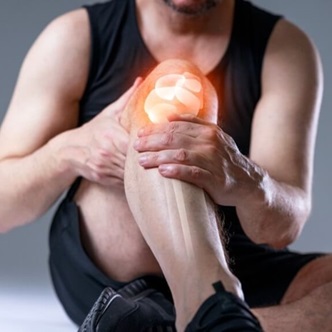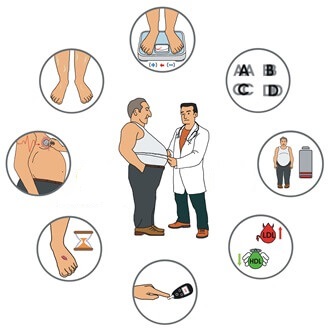See details
READ MORE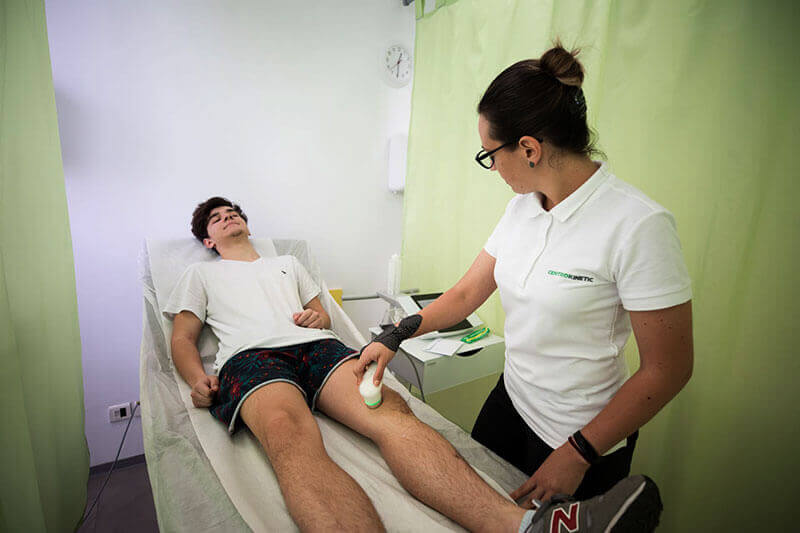
Recovery for patellar tendonitis (jumper’s knee)
The most common knee tendonitis is patellar tendon irritation. Also known as the "jumper's knee", patellar tendinopathy is an inflammation of the tendon that attaches to the patella of the tibia. This pathology is described especially in people who play basketball, volleyball, tennis, long jumpers, climbers, and those who practice figure skating.In many cases, you will notice acute pain in the area below the knee at the end of sports or recreational activities. You may notice a pain when you land in a jump or when you go up or downstairs. Pain can also occur at rest, especially when you sit with your knees bent for a long time. Swelling of the knee is also common, as is the feeling of weakness when you feel pain.
The patellar tendon becomes swollen and frail due to overuse. Patellar tendon overload injuries occur when you repeat an activity (usually running or jumping) until a micro-lesion of the tissue that made up the substance of the tendon occurs. Consequently, the patient will experience swelling, inflammation, and pain. In the acute stage of patellar tendonitis, pain and inflammation will subside with rest. You may feel pain at the beginning of the activity, but it usually disappears after a warm-up period and will reappear at the end of the activity.
If you continue with the activity in the presence of pain, you can perform the exercises at a normal level. However, the pain will become more and more persistent and will be present before, during, and at the end of the sports activity. At this stage, you can cause permanent tendon damage, which will require a longer period of healing.
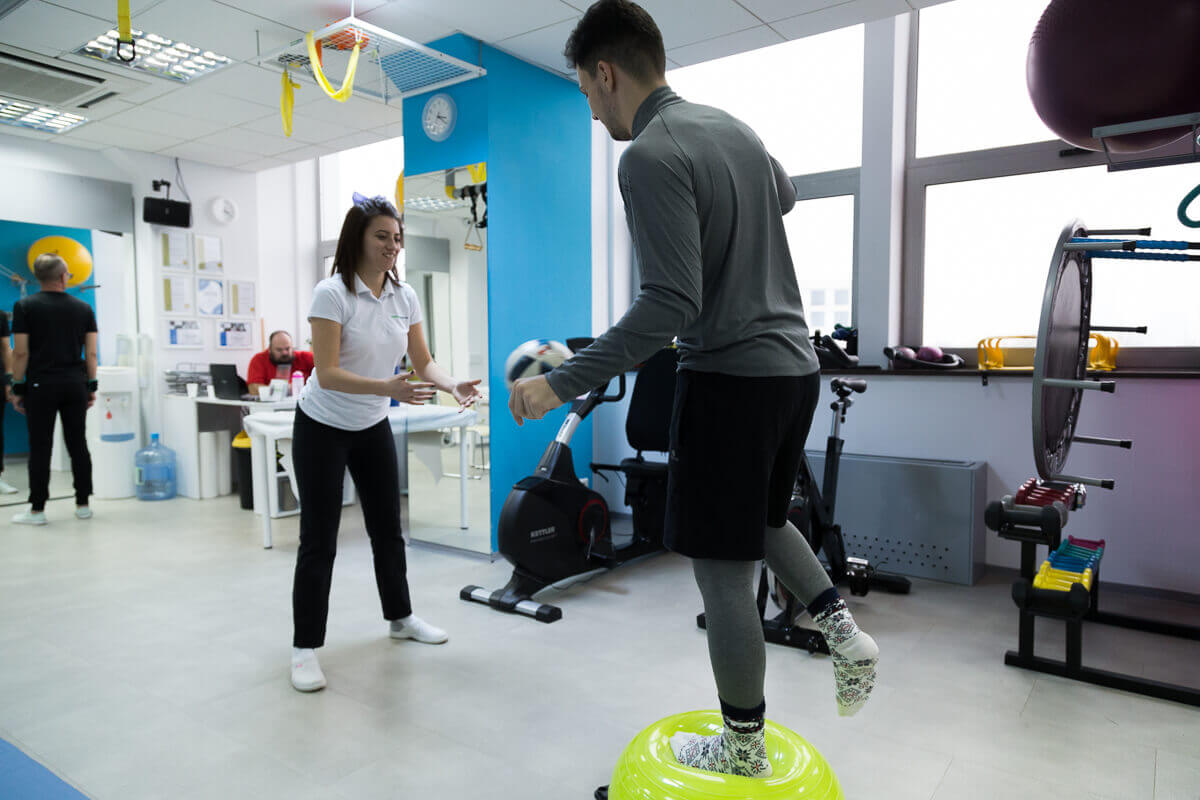
Treatment
The treatment has two objectives: to reduce inflammation and allow the tendon to heal.When the knee is sore and swollen, you need to rest it. Avoid climbing stairs and sports activities that involve jumping. Keep the lower limb stretched when sitting and avoid knee bends. If you continue your sports activity in the presence of pain, you will only aggravate the pathology. Minimal discomfort is not a problem but pain is a serious cause for concern.
Apply ice for 20 minutes, two or three times a day, and at the end of sports activities, thus reducing swelling, inflammation, and pain. An orthopedic doctor or physiotherapist may recommend a series of exercises to strengthen your muscles. In some cases, however, surgery is necessary.
Sports
Use your judgment. When your knees hurt, avoid sports activities because this will only aggravate your problem. Total rest may often be necessary.- Sports that can aggravate patellar tendonitis: volleyball, basketball, football, long-distance running, squash, rugby, and weightlifting.
- Sports that can not cause symptoms: cycling (it is best to position your saddle in a high position and avoid the hills), skiing, tennis.
- Sports that are the easiest for the knees: swimming, walking (also avoid the hills), and cross-country skiing.
Do not perform the following exercises:
- Lunge
- Squats
- Steppers
- Leg extension devices.
The following exercises are OK if they do not cause pain or swelling:
- Straight leg lifting exercises
- Medical bicycle (saddle up, minimum resistance)
- Foot press (do not let your knees bend more than 90 degrees)
- Quadriceps muscle exercises
Exercises
The next exercise program should be followed under the close supervision of a doctor or physiotherapist. For extended limb lifting exercises or short lifts, you can add ankle weights to increase the endurance of the exercises and increase strength. Start with 500 mg and gradually increase to 500 mg per week until you reach 2.5 kg. The exercises should be performed daily until the ankle weights are added. At this time, the straight leg lifting exercises, short lifts, and sliding on the wall should be performed every 2 days, the stretching exercises being performed daily. When you can perform straight leg lifts and short lifts with weights of 2.5 kg, continue them only twice a week.Extension of the limb
Contract the quadriceps muscle so that the knee is flat, straight, and fully extended. Try to lift the entire operated limb off the bed or floor plane.
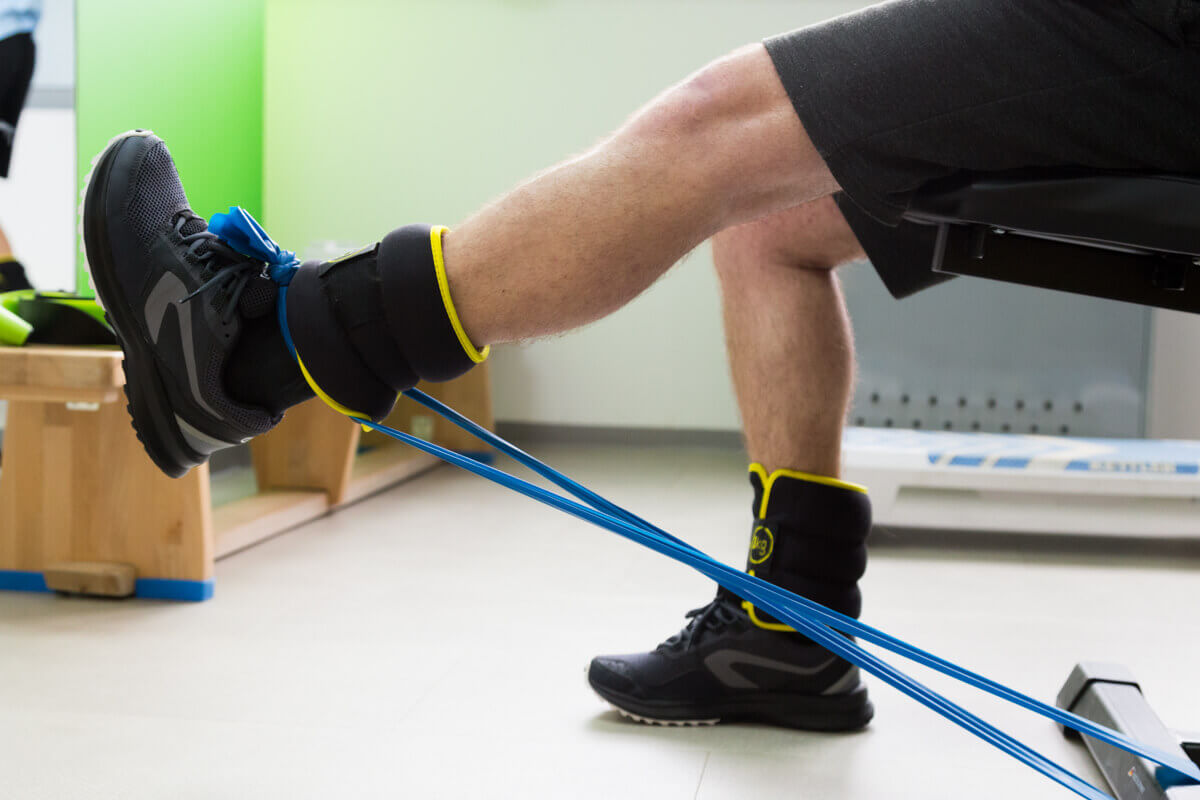
Slips on the wall
Stand up straight with your back and bottom touching the wall. Place your feet 30 cm away from each other and 6 cm away from the wall. Bend your knee and slide along the wall until your knees are bent at 45 degrees. Hold this position for 5 seconds and then return to the starting position. Perform 3 sets of 10-15 repetitions.
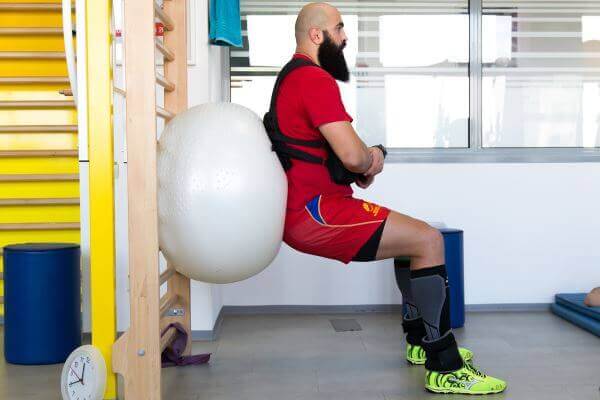
Stretching hamstring
Perform these exercises in the position in the next figure. Bend forward at the hip, keeping the knee fully extended, until you feel a slight stretch in the back of the thigh and knee. Hold the stretching position for 15-20 seconds and repeat 3-5 times.
Stretching cvadriceps
This exercise is performed as in the adjacent position. Perform a movement near the heel. When you feel a stretch in the front of the thigh and knee, hold the position for 15-20 seconds for 3-5 repetitions.
Hip and thigh stretching
Cross your left/right leg in front of the other. Lean-to the left/right, leaving the prominence of the right/left hip out. When you feel a slight stretch on the outer side of the hip, hold this position for 15-20 seconds for 3 or 5 repetitions.
Stretching the calf
In the illustrated position, keep the heel straight on the floor, with the knee fully extended. Bend forward, with your hands supporting your weight. When you feel a slight stretch in the back of the leg and knee, hold this position for 15-20 seconds for 3-5 repetitions.
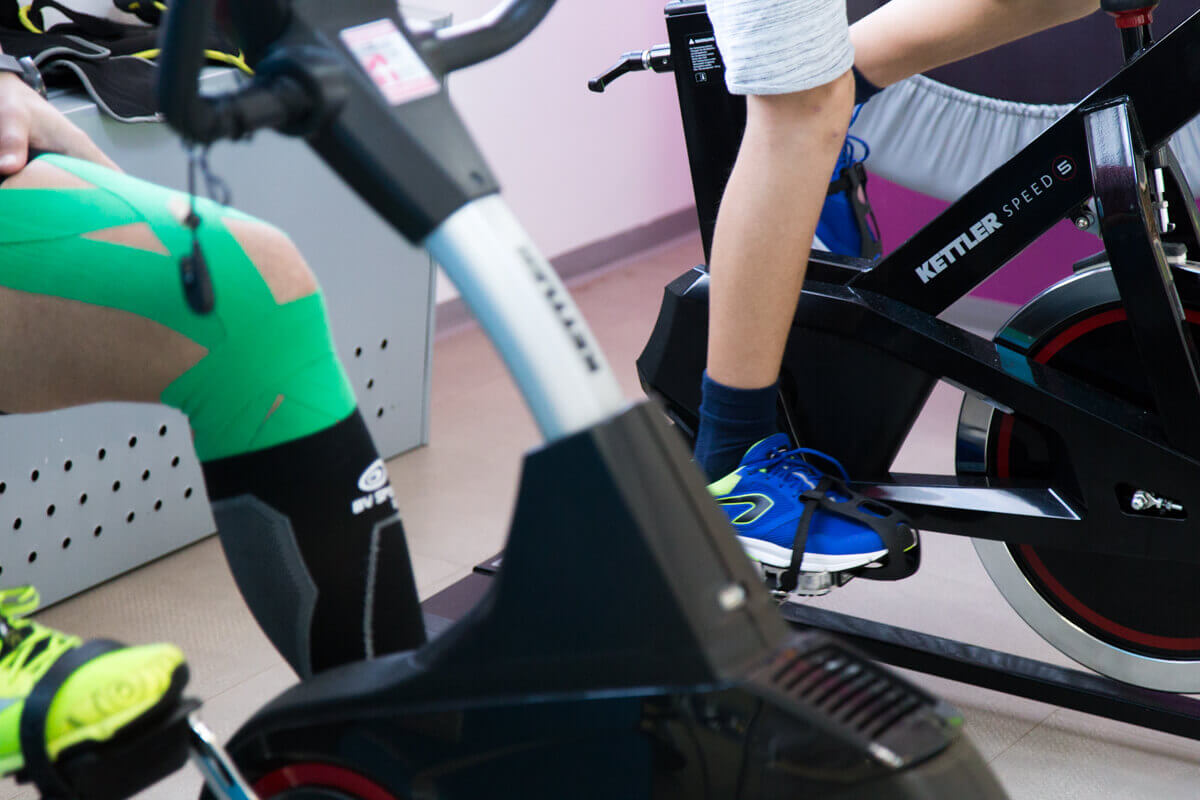

MAKE AN APPOINTMENT
CONTACT US
SUCCESSFUL RECOVERY STORIES
MAKE AN APPOINTMENT
FOR AN EXAMINATION
See here how you can make an appointment and the location of our clinics.
MAKE AN APPOINTMENT




